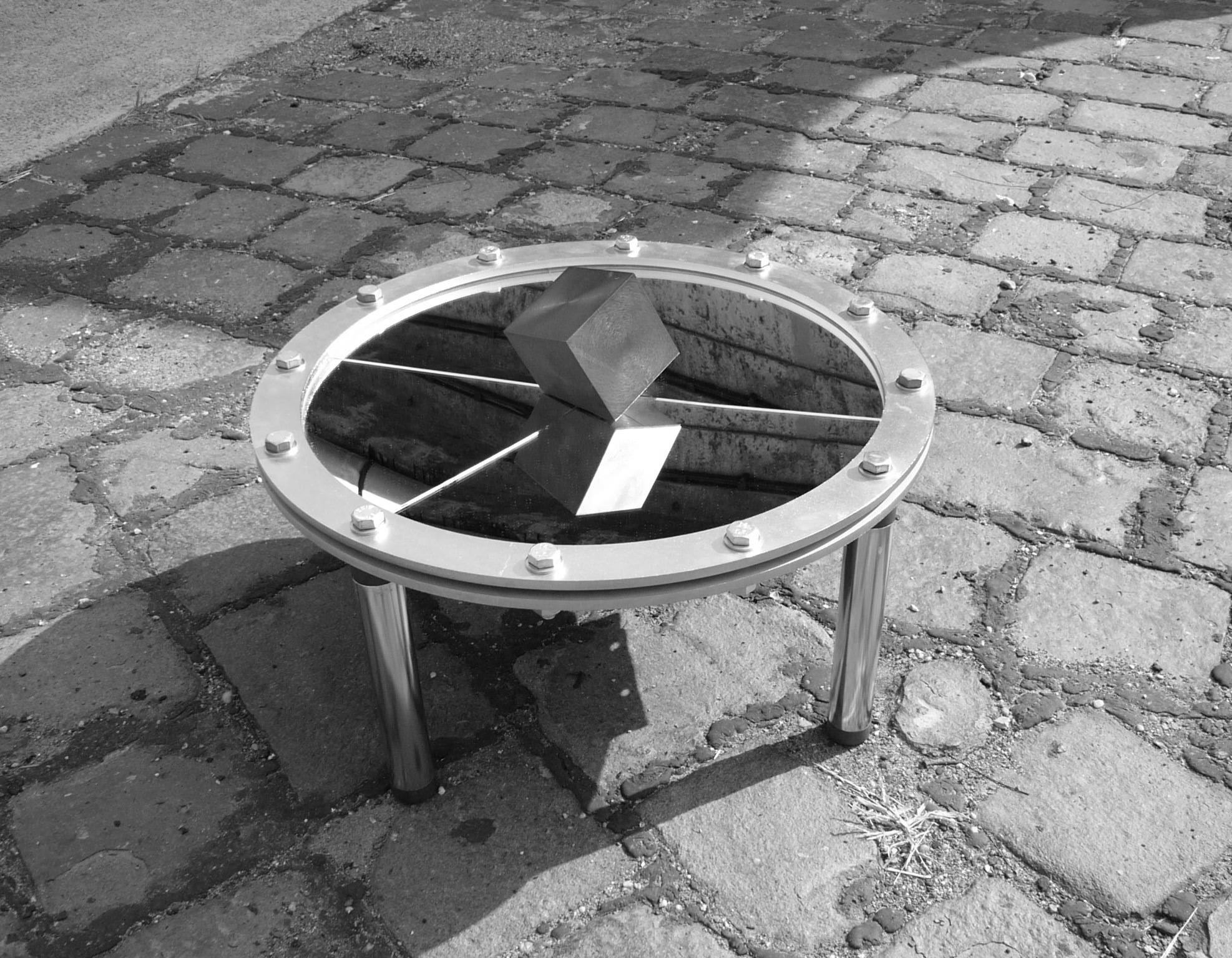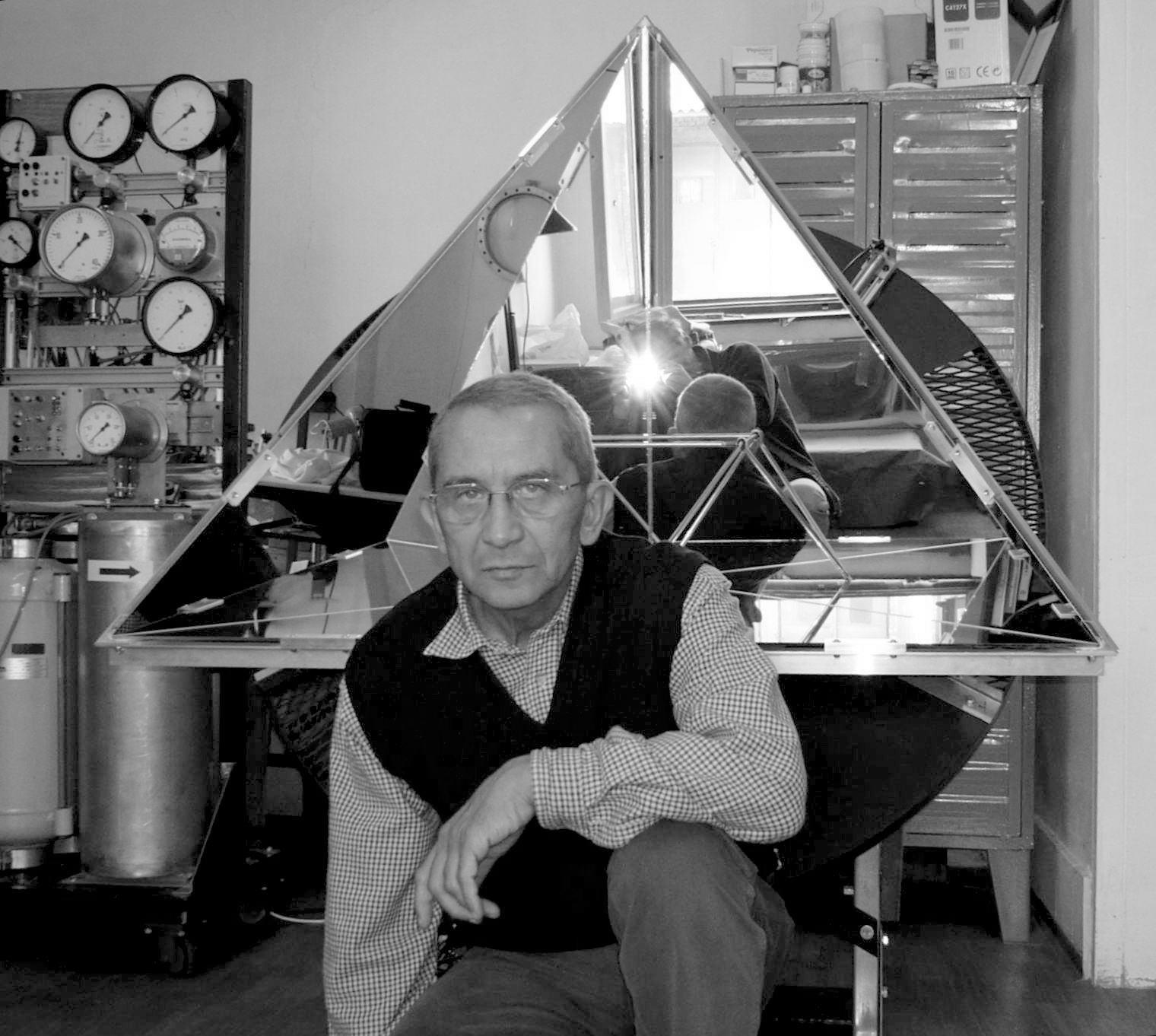|
THE MODEL (2002) FERENC PÓCSY
ABOUT MY WORK Generally speaking on my activity and my works: I am attracted by such kind of new solutions which are based on even the most elementary geometrical and physical rules; however, they do not seem trivial. I firmly believe that the viewing and discovering of the visible truth can give the joy of the understanding to the recipient persons whether they are familiar with the natural sciences or not. The order might be reversed. From time to time we are wondering at something and then make trial to understand and give an explanation to it. Some topics which I am enthusiastically interested in:
Figure 1: After the Impact (2002)
THE MODEL (2002) Physical description
The exhibition item is a mobile sculpture. (THE MODEL (2002), metal mirror, pneumatic, 174 x 130 x 80 cm) Main parts: 1. Three equilateral rectangle triangle shaped mirror. They form the corner of an inward reflecting cube. 2. Three pneumatic cylinders. Length: 300 mm. The arrangement of the pneumatic cylinders permits the piston-bars to move towards the inside of the mirror cube through the mirrors’ holes. 3. Electronic and pneumatic operation unit. It is adjustable and programmable. The function of the unit is to operate the pneumatic cylinders periodically. 4. Frame. The arrangement of the three mirrors (a, b, c) as a cube corner implies 7 transformations (a, b, c, ab, ac, bc, abc). The three planes divide the space into 8 parts. The spectacle is made up of an eight part space and his 7 reflections. While in action, the piston-bars pushed in the space form an equilateral triangle. The vertexes of the triangle fit on the mirrors’ planes and are at the same distance from the vertex of the cube. The spectator can observe a 14-sided semi-regular solid with 8 regular triangles and 6 quadrates. This solid might be generated by cutting off the corners of a cube. The above mentioned solid builds up and disappears periodically.
The speed of the movement can be regulated (e.g. creeping setting up and
sudden collapse). The frequency of functioning can be changed, too. Several
modes of operation are possible which are controlled by an infrared sensor,
also registering the visitors’ position.
Figure 2: The Model (2002)
|

